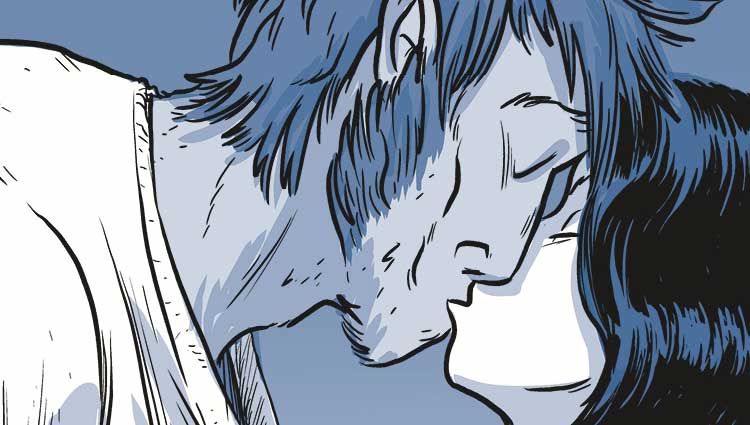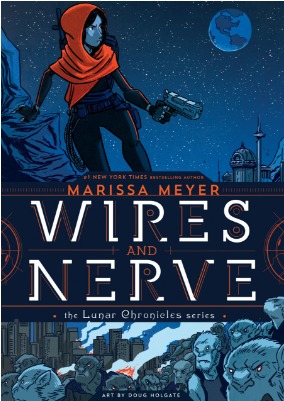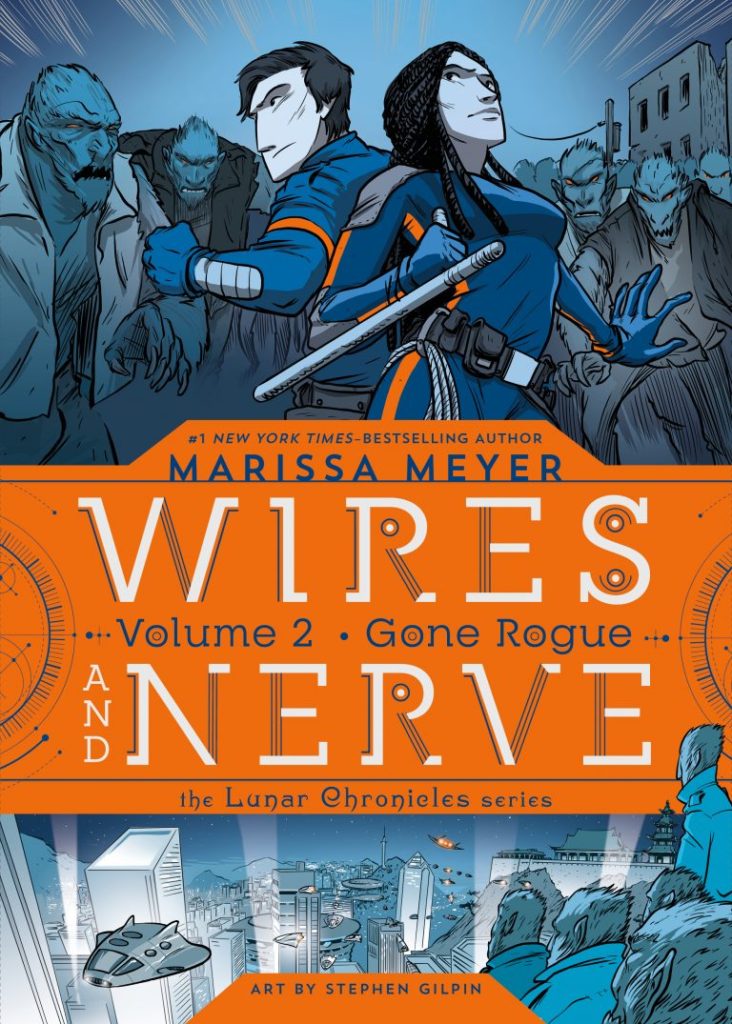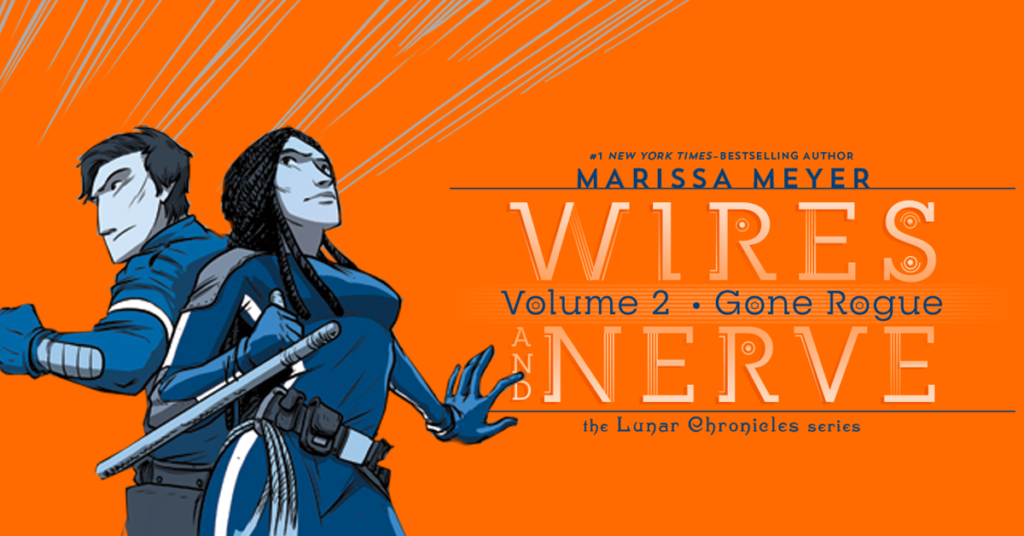Welcome to the final installment of my blog series on how I wrote the WIRES AND NERVE graphic novels! If you missed any of the previous posts, start from the beginning.
The first three parts of this series were mostly about writing the actual script for the book. Once it’s finalized and approved, it’s time for the script to go to the artist, and that’s when the real magic starts to happen!
Character Sketches
Before the artist delved into the script, he first provided character sketches of the main players, based off descriptions that I’d provided, so we could be sure they all matched my vision. Most of the character sketches were spot-on right from the start, but a handful required some tweaking.
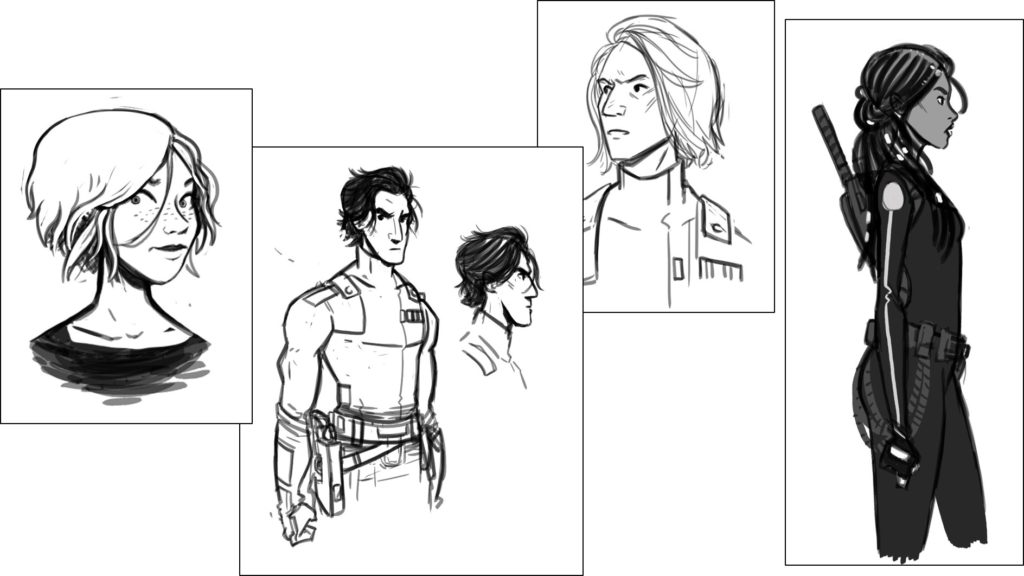
Initial sketches for Cress, Kinney, Jacin, and Iko.
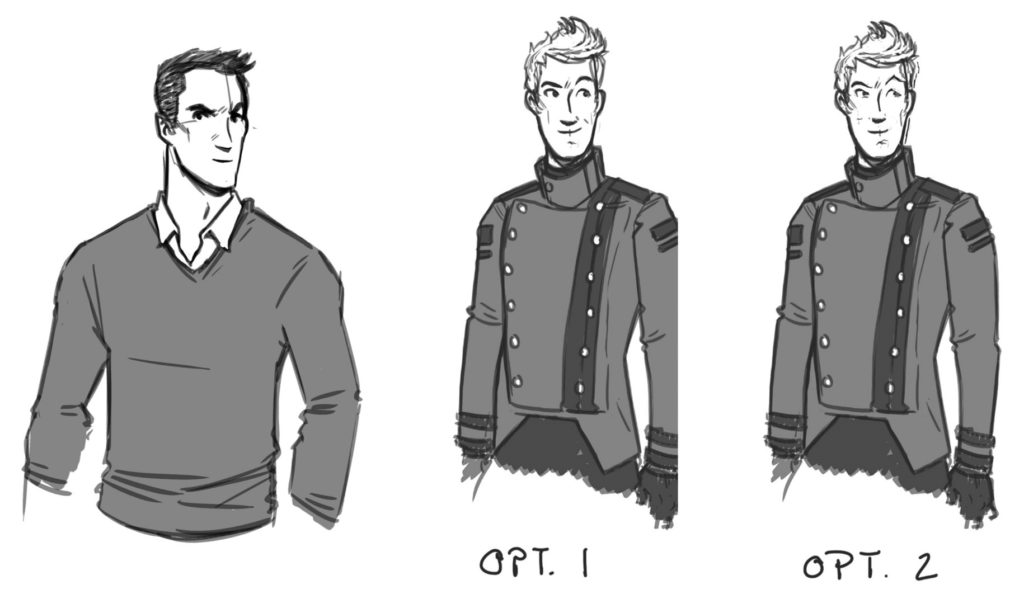 Initial sketch for Thorne, followed by revised options.
Initial sketch for Thorne, followed by revised options.
After approval, he was able to start in on the script!
And here, to be completely frank, I became pretty uninvolved, so I don’t actually know too much about what happens behind the scenes, though I suspect—like with authors—every artist has their own process that works for them. I know with the first WIRES AND NERVE, the artist Douglas Holgate would sometimes send sequences of pages out of order, so perhaps he was working on what was most inspiring him, or focusing on a particular subplot or character at a time. Whereas with Volume 2: GONE ROGUE, the artist Stephen Gilpin submitted all pages in order, starting from the beginning.
Whatever their process, though, once they had a bundle of sketched pages completed, those would be forwarded on to me and the publisher to review. I was repeatedly reminded that these sketches were “rough”—in some cases more directional than anything else—but they were still head and shoulders beyond what I’d expected for a first draft, and this was the point when I started getting really super excited. It looked and felt like a real graphic novel! Eeeeeh!!!
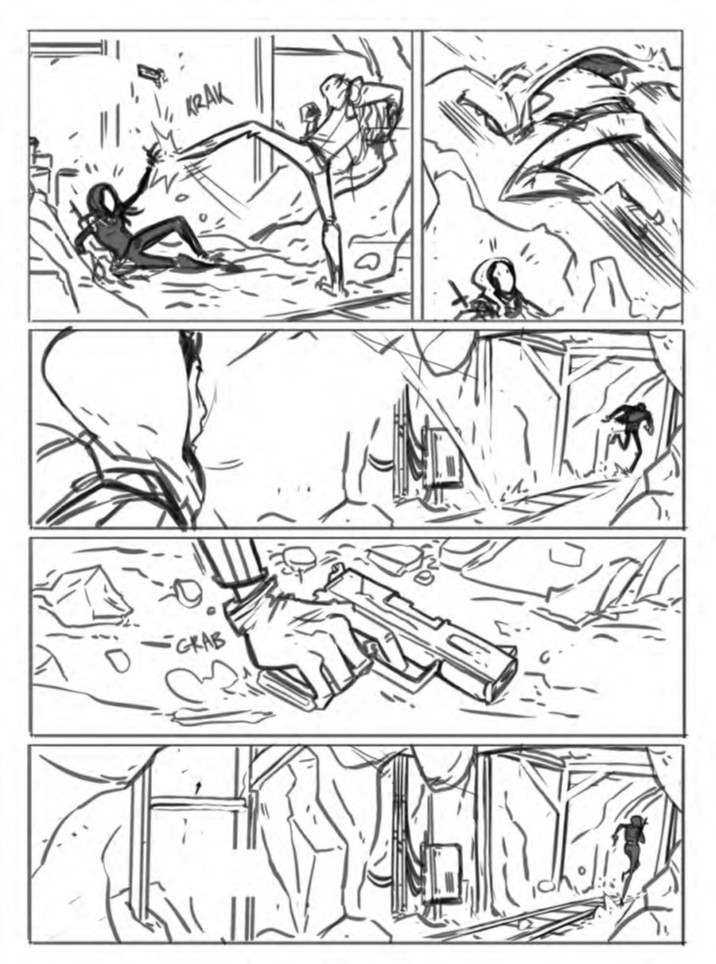
First “rough” sketches.
In seeing the initial sketches, I was able to give feedback and make requests for changes, though I have to say, both of the artists that we worked with on these books were SO good, and I could not have been any more impressed with their quality of work. They both nailed my vision for the story on the first try 95% of the time, and I almost never had to ask for any big changes. There would be the occasional request for consistency or world-building stuff (i.e., sometimes Cinder’s cyborg hand ended up on her right hand and had to be switched to the left, or there was one time when the artist had drawn a citizen of Luna with a pipe in his mouth, which I requested to be taken out because there is no nicotine on Luna, stuff like that).
After all feedback was submitted (from me, my editor, and the book’s designer), the artist went back and updated the sketches. The next round of pages would begin to look a lot more finished:
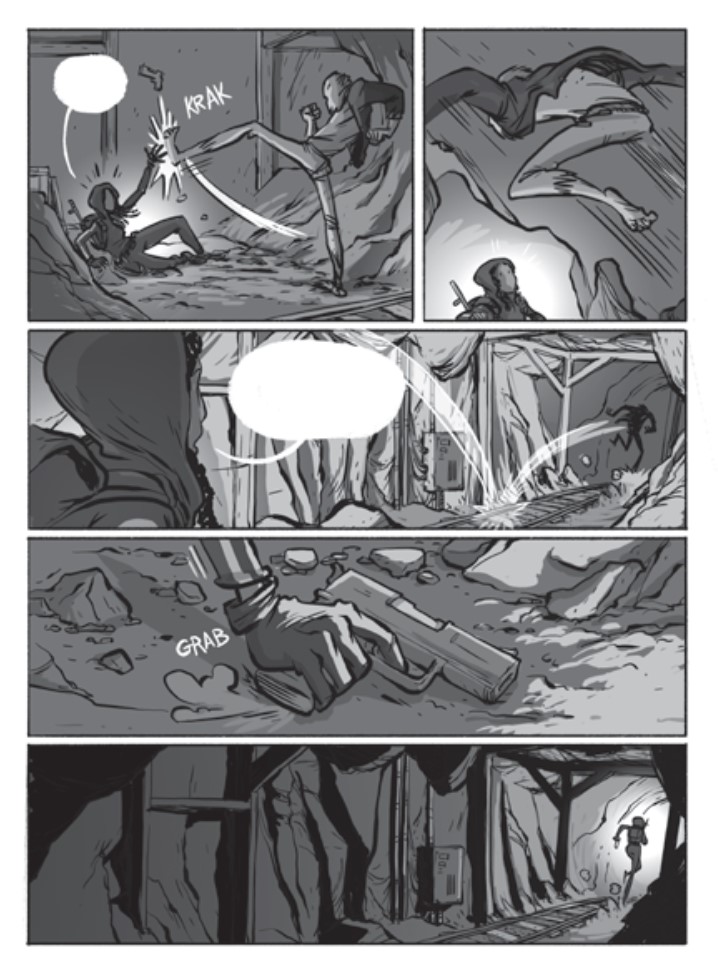
Second-round pages.
Sometimes the pages would have text at this stage, sometimes not. The text is added in by someone else, not the artist, and it never became clear to me at what point they get in to the files to add it in.
Once the illustrations and lettering are finished, I get to review the whole thing again, now as a complete book. I LOOOOOOOVE this part. With my novels, too, I love when I finally get the typeset page proofs, because in both circumstances it is the first time when I can look at the book and see it as readers will see it. It feels like something official and real and professional, and this stage is often the first time in the process when I can really take a deep breath and think—“You know what? I’ve totally got this.” (A shame that it takes that long to feel confident about any project, but I’ve come to realize that’s just part of the job.)
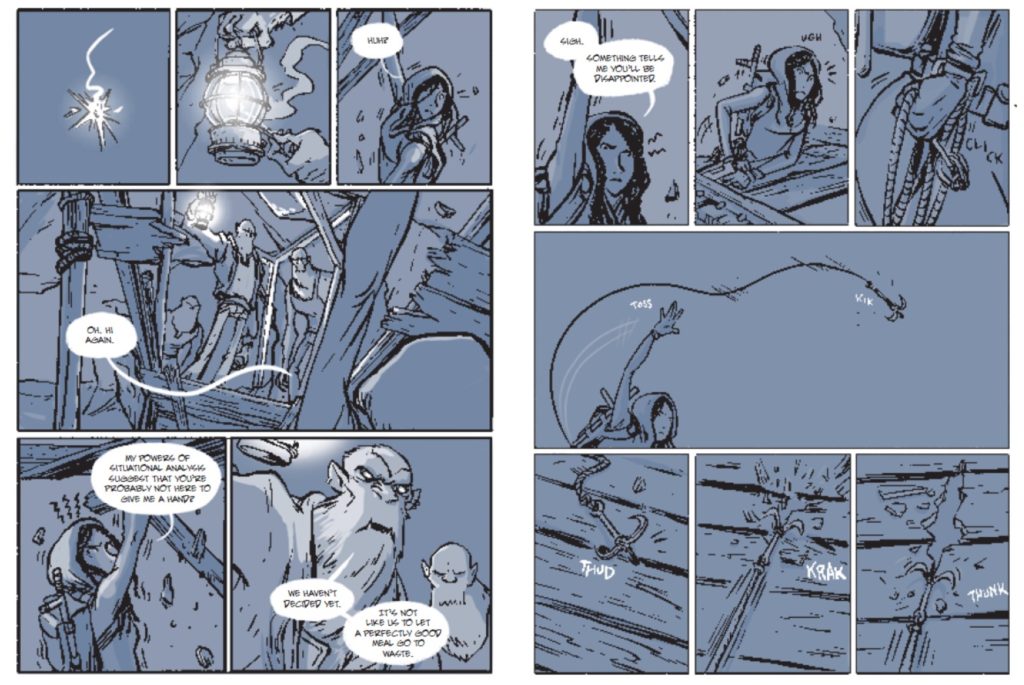
Final pages.
So with the final pages in hand, I will conduct one last read-through. Here I am checking to make sure the story is consistent, there are no glaring problems in the text or illustrations, and the dialogue doesn’t feel too wordy at any given point. I find myself doing a fair bit of editing at this stage, because once you see all the text typeset onto the page, you can usually tell when the characters are talking too much. Also, things that seem like they need lots of explanation in the script now seem like they need much less explanation, often because the illustrations are doing so much of the work themselves.
I generally get to see any changed pages one more time to make sure all edits were made correctly, and then…
It’s off to the printer!! Woot!
And at some point after that, a big carton of gorgeous, finished, beautiful books are delivered to my door, and to bookstores everywhere, and we all ogle and squeal and dance around our living rooms clutching them joyously to our bosoms and crying tears of overwhelming delight.
I mean, that’s totally normal, right?
And that’s how my journey was writing WIRES AND NERVE and WIRES AND NERVE, VOLUME 2: GONE ROGUE. In the end, I absolutely loved writing these two graphic novels. In fact, it is probably the most fun I’ve had writing something since my days of Sailor Moon fanfiction! I definitely have more graphic novel ideas in the works, so I hope to try my hand at it again in the future.
But in the meantime, I sincerely hope you guys will love the conclusion to Iko’s story in GONE ROGUE… in stores now!
Read this blog series from the beginning: Part I | Part II | Part III | Part IV
